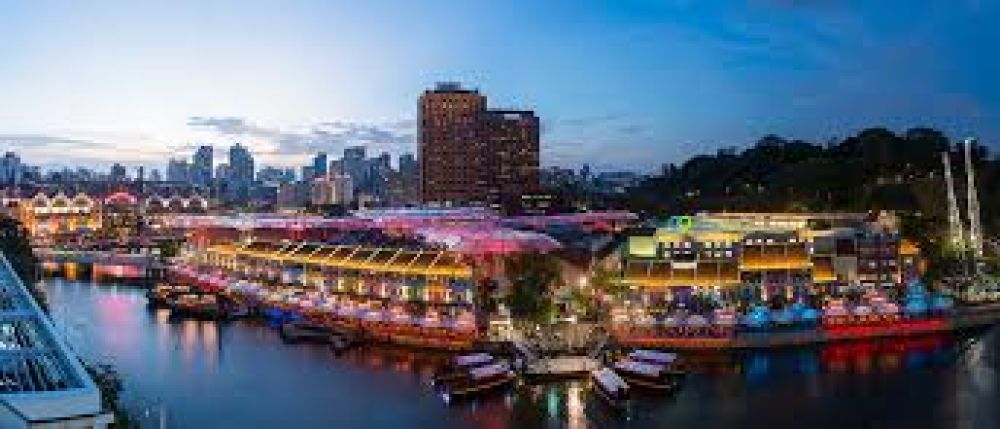

Once a historical riverside quay at the mouth of the Singapore River, Clarke Quay has transformed into a lively hub teeming with activity, embodying Singapore's rapid progress and its knack for blending the old with the new. Named after Sir Andrew Clarke, Singapore's second Governor, Clarke Quay has witnessed the city-state's evolution from a colonial trade center to a thriving cosmopolitan city.
Originally a center of commerce during the 19th century, Clarke Quay was bustling with bumboats and cargo. Spices, rubber, and tin from the region were traded here, enhancing Singapore's status as a critical port in Southeast Asia. The quayside thrived, with godowns and shophouses built to facilitate trade.
As modern shipping techniques and containerization emerged, Clarke Quay's relevance in international trade decreased. However, the Singapore government, recognizing its potential as a historical site, embarked on restoration projects in the 1980s to revitalize Clarke Quay, ensuring its warehouses and shophouses were carefully conserved.
By the late 20th century, Clarke Quay had been successfully transformed into a flourishing lifestyle and entertainment precinct. Restaurants, retail stores, and nightlife venues took over the once commercial warehouses, redefining the Quay as a must-visit for locals and tourists alike.
The focal point of Clarke Quay’s transformation was perhaps the innovative cooling system designed to keep visitors comfortable amidst Singapore’s tropical climate. The covered streets with cooled al-fresco dining options made it possible for guests to enjoy the vibrancy of the area in utmost comfort.
In recent years, Clarke Quay has seen a surge in interest as a destination that caters to a variety of tastes and preferences. With its blend of historical sights, modern attractions, and a dynamic nightlife, it stands as a testament to Singapore's diverse tourist offerings.
Daytime activities engage visitors in river cruises, heritage tours, and exploration of the Asian Civilisations Museum nearby. As night falls, the area comes alive with live music, bustling pubs, and nightclubs, alongside international dining experiences that appeal to food connoisseurs. Clarke Quay also hosts special events and festivals, further cementing its status as a lively entertainment quarter.
Sustainability and experiential travel have become significant trends in the tourism sector, and Clarke Quay is part of this movement. Efforts towards sustainability can be seen in the architectural designs that minimize energy consumption and the use of electric bumboats for river cruises.
Modern travelers seeking authentic experiences find Clarke Quay’s mix of historical charm and contemporary lifestyle offerings to be a unique draw. The attraction's management continually curates novel and exciting experiences, ensuring that Clarke Quay remains a premier destination that reflects both the heritage and innovation of Singapore.
Clarke Quay's transformation from a colonial trade center to a pulsating, modern entertainment zone exemplifies Singapore's commitment to preserving its heritage while pushing the boundaries of urban development. Clarke Quay remains a multifaceted destination that continues to captivate visitors with its rich history, stunning waterfront views, and its ever-evolving touristic appeal.